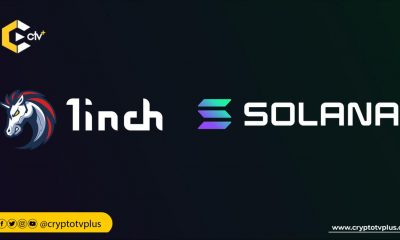FEATURED
Teleport wants to disrupt the transportation industry; founder discusses how

The rise of Uber and Lyft is a testament to the power of software-driven disruption within industries, spawning innovative services and products for users. With Uber’s current valuation standing at $107.50 billion and Lyft at $3.3 billion, the impact is undeniable.
During the Breakpoint 2023 conference led by Solana, Paul Bohm, the visionary behind Teleport, explored the ride-sharing industry’s future through the lens of blockchain technology.
Paul not only shared Teleport’s aspirations with the audience but also shed light on how protocols could shape the future landscape of business models.
What is Teleport?
Teleport is a Solana-based protocol for ridesharing powered by DEC’s TRIP protocol. Teleport is unique as it is owned and governed by its drivers, passengers, and builders. The protocol seeks to address some of the headwinds faced by traditional ride-sharing, giving control back to drivers and customers.
Teleport allows users to access resources through a certificate authority and identity-aware, multi-protocol access proxy that implements protocols such as SSH, RDP, HTTPS, Kubernetes API, and a variety of others.
The key concept of Teleport’s architecture is the cluster, which consists of the Teleport Auth Service, Teleport Proxy Service, Teleport agents, and resources that you want to connect to such as Linux or Windows servers, databases, Kubernetes clusters, Windows desktops, and internal web apps.
To create a minimal Teleport cluster, you must launch three services: Teleport Auth Service, Teleport Proxy Service, and Teleport agents. Teleport is also the first mobile client for The Rideshare Protocol (TRIP).
Need for open protocols in the tech industry
Paul, known for his background as a protocol engineer and the founder of hackerspaces, highlighted the importance of open protocols in fostering genuine collaboration and community.
He drew parallels between his earlier experiences in building hackerspaces and the current need for open protocols in the tech industry.
The core idea behind Teleport’s initiative is to challenge the centralized nature of traditional ride-sharing apps, where companies often prioritize profits over fair compensation for drivers.
The founder shared a personal experience where he discovered the disparity between what riders pay and what drivers receive in a conversation with a ride-sharing driver. This realization fueled his determination to create a more equitable system.
The right share protocol
Paul revealed the key point of the “right share protocol.” Drawing inspiration from the success of Bitcoin and its proof-of-work mechanism, Teleport’s protocol, referred to as “Satoshi’s Bridge,” aims to reward early adopters who contribute to the growth of the network. This proof-of-revenue model seeks to address the network effect that keeps users locked into established ride-sharing companies.
Teleport plans to launch the protocol city by city, encouraging competition between operators to see which city can adopt the open protocol first. The competition is expected to incentivize early adopters in each city, creating a domino effect as more cities join the network.
He noted that Teleport is not just a ride-sharing app; it is an application that accesses the open protocol. The ultimate vision is to have various applications built on the right share protocol, creating a decentralized and fair marketplace for both drivers and riders.
Read also; Rimark’s CEO speaks on how Solstice Network plans to transform banking with blockchain






















